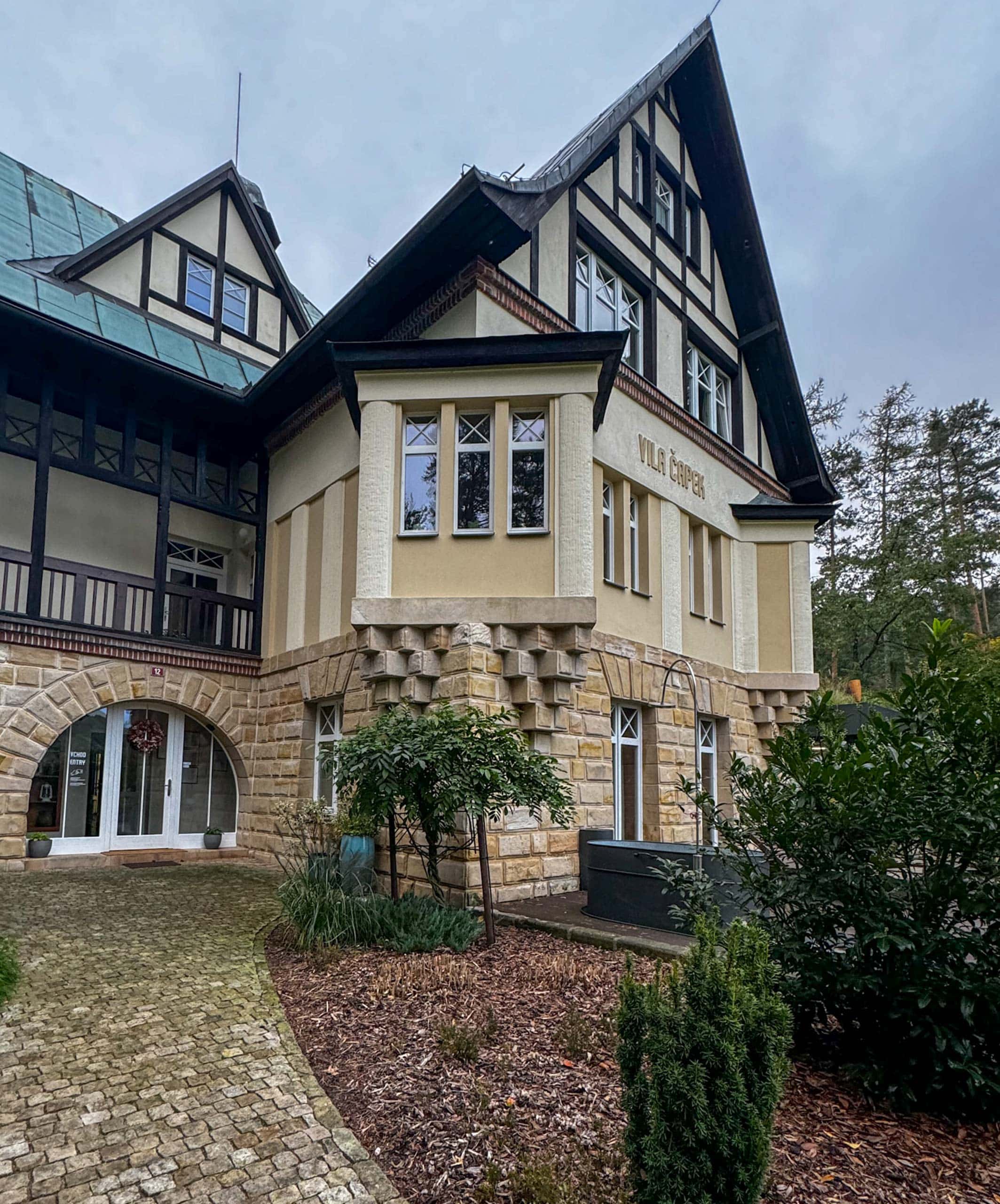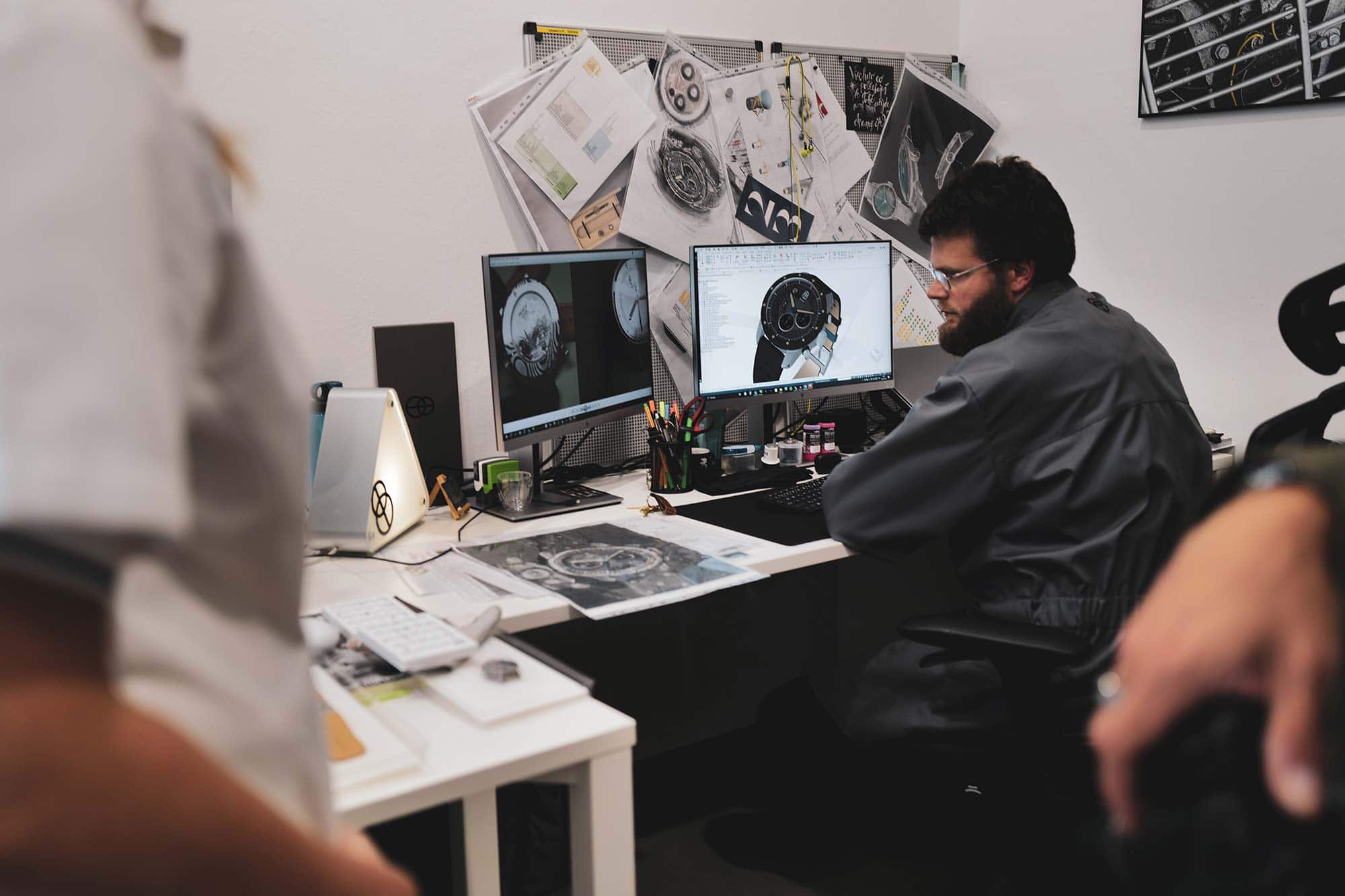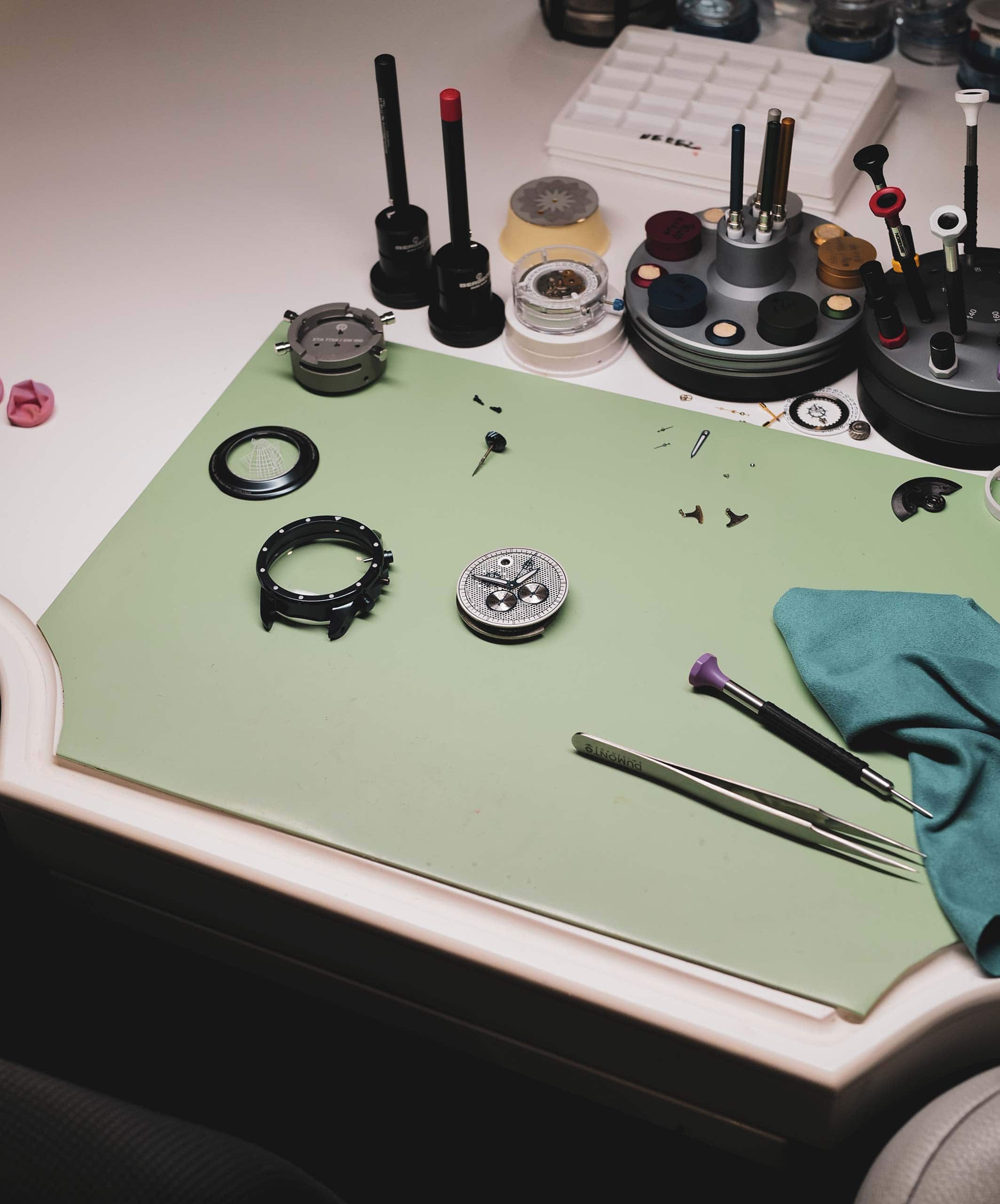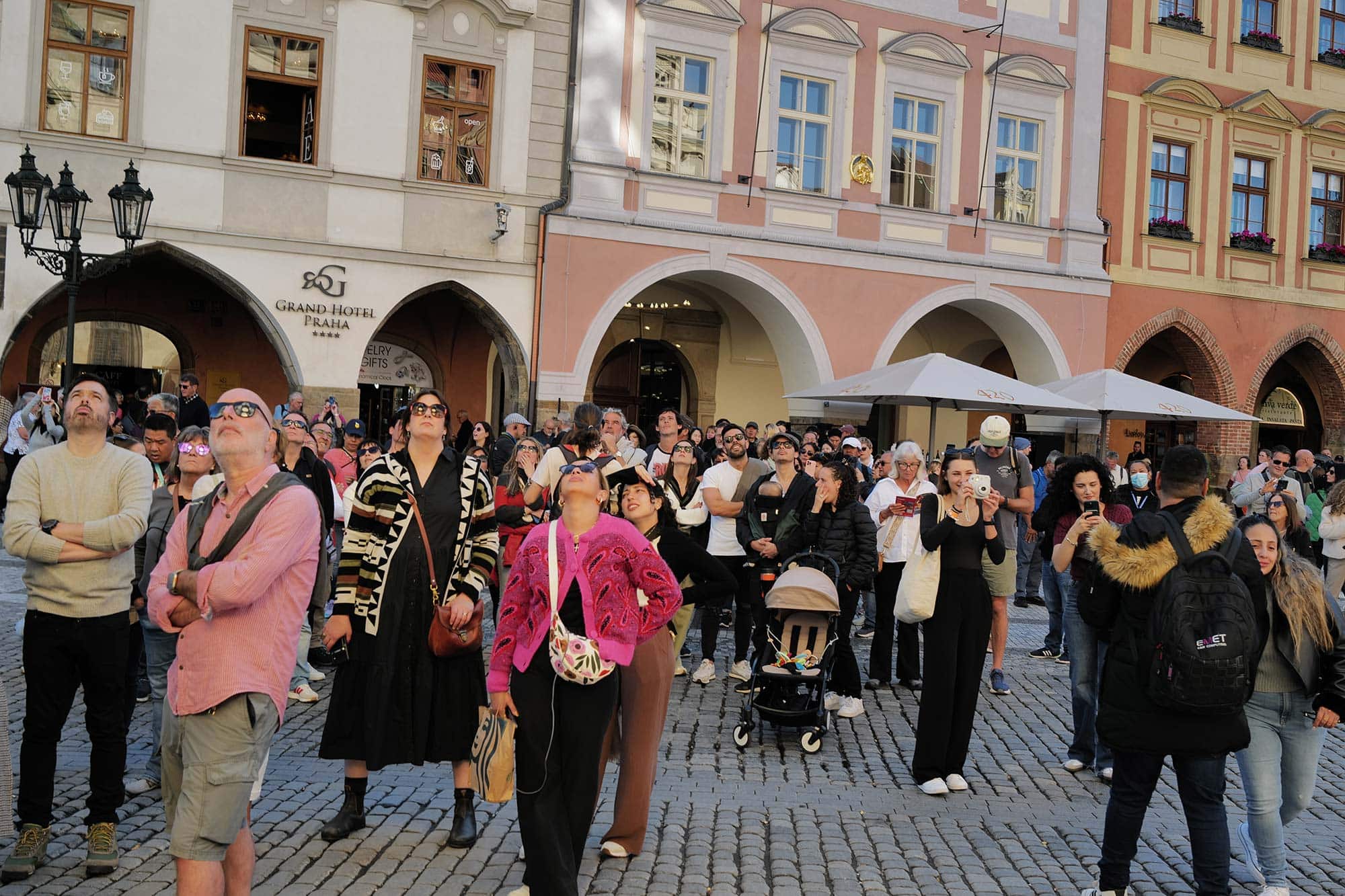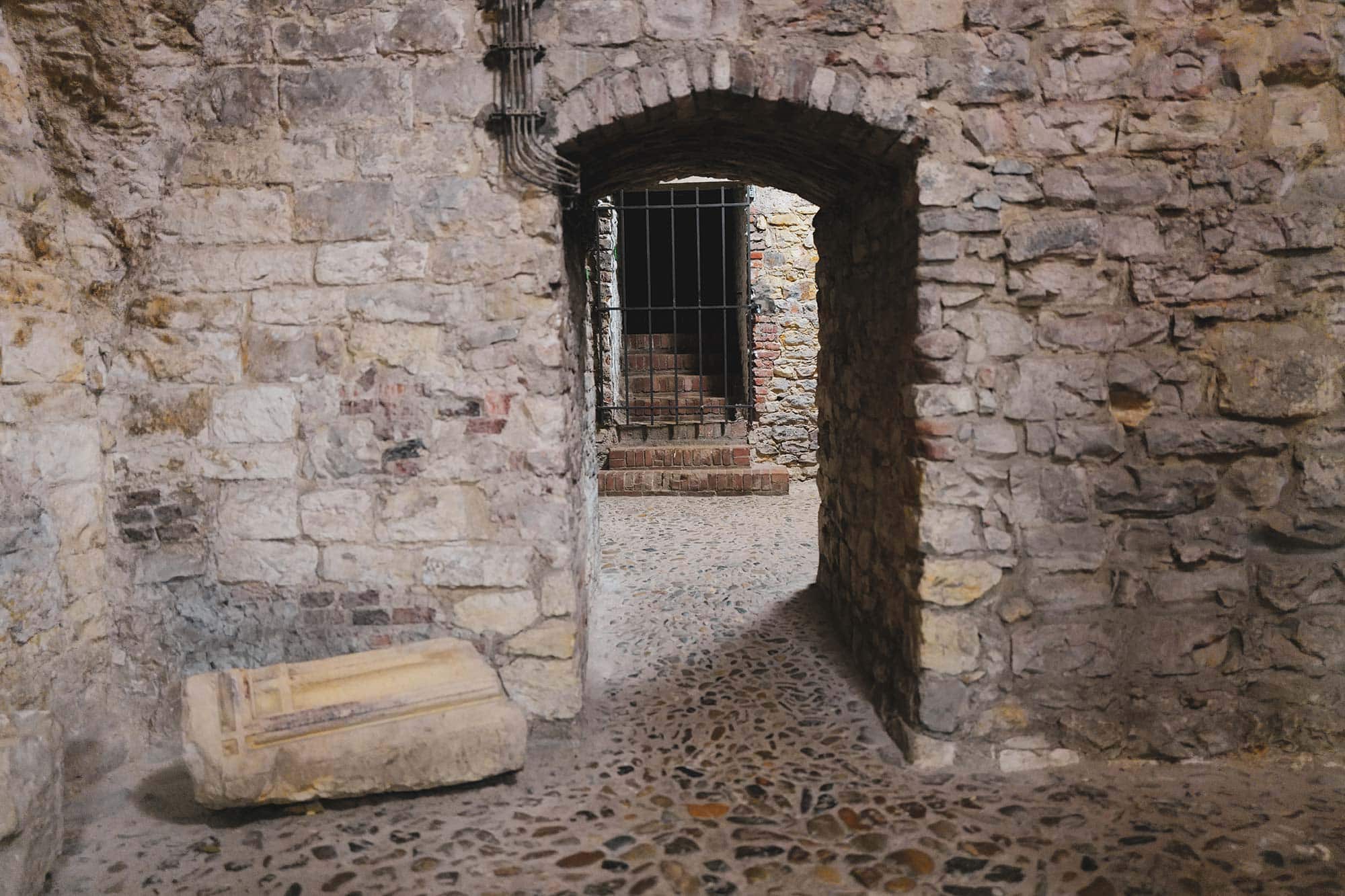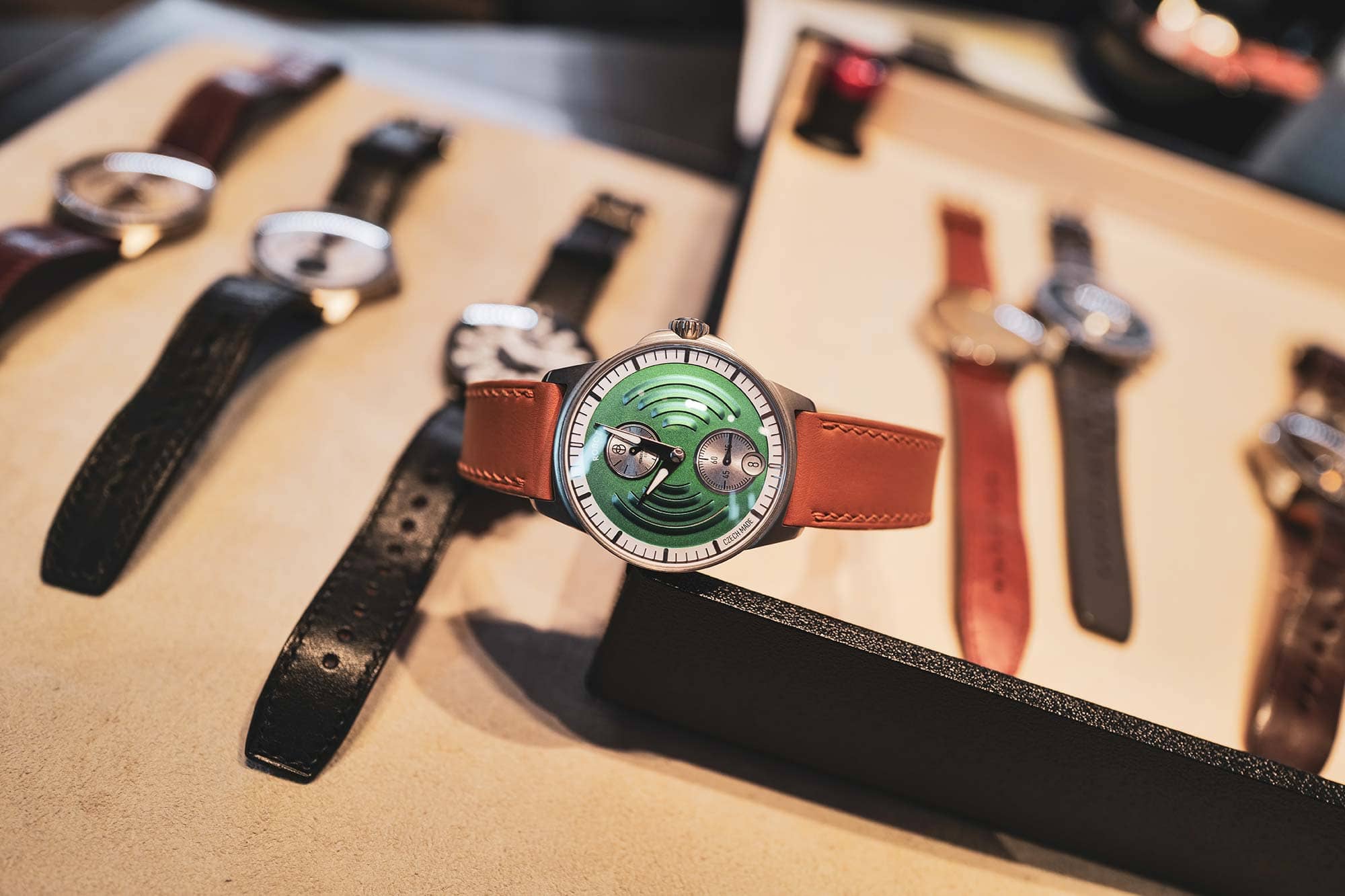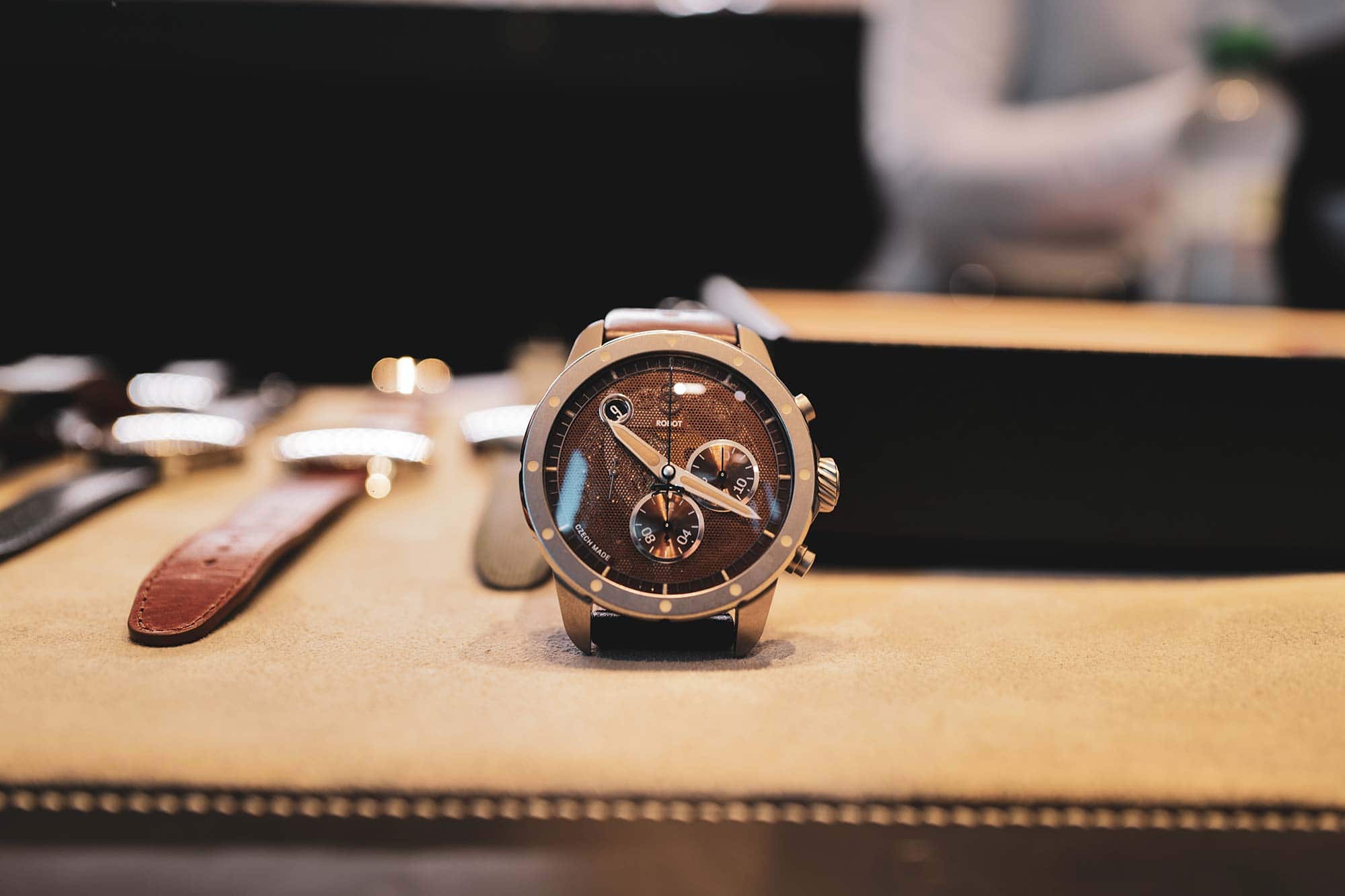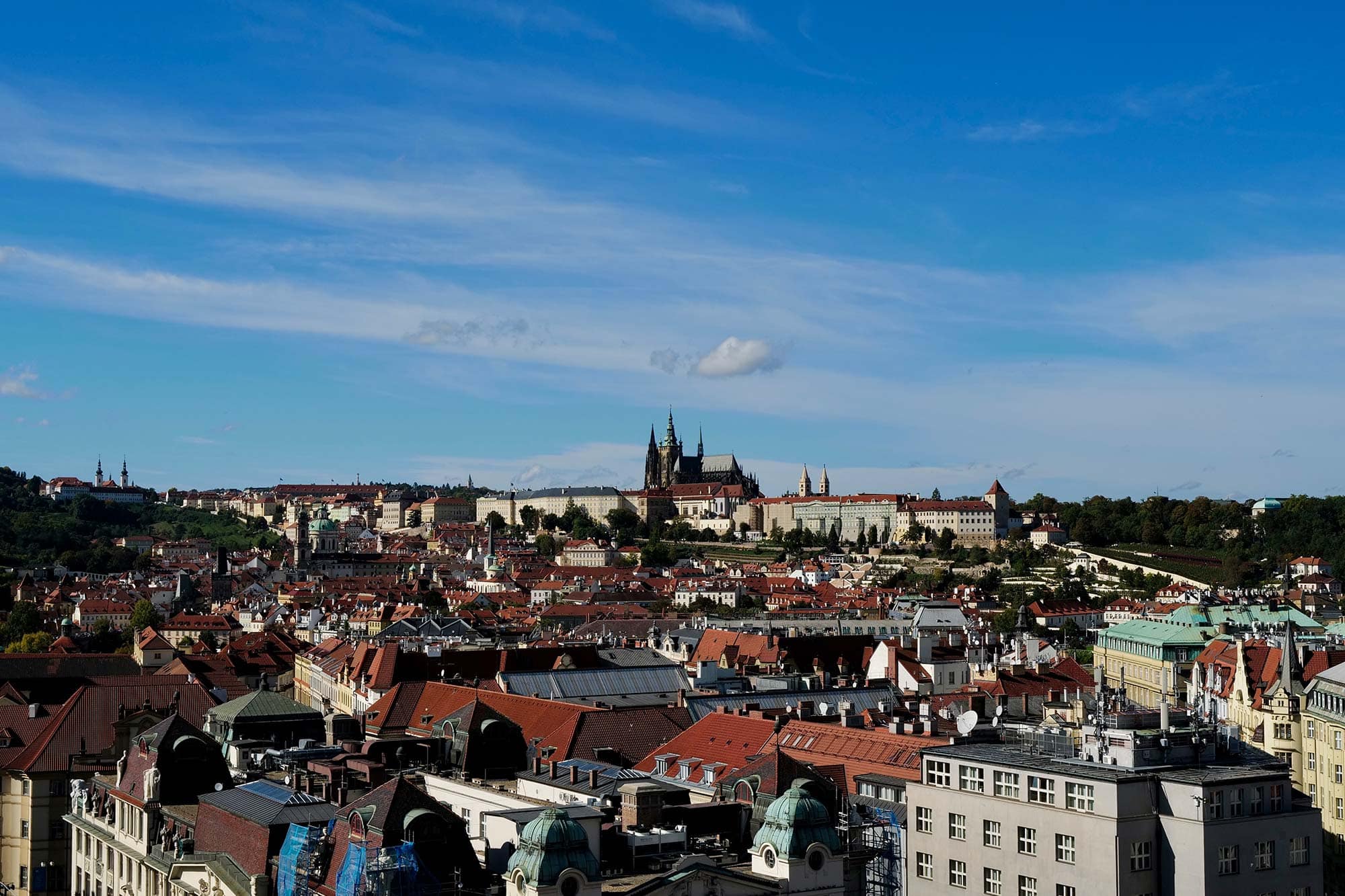
The watch industry is notoriously slow moving, but sometimes things can take shape surprisingly fast. Consider, for example, that at the beginning of the year, I had never heard of Robot, a Czech Republic based watch brand specializing in low production, idiosyncratic pieces rooted in Czech culture and history, and by the fall I was heading to Prague on a press trip to check out their manufacture and take in the surprising watchmaking heritage of one of Europe’s great cities. If you’re open to being surprised in the watch world, there’s literally no end to great discoveries from under the radar brands.
Robot was founded by Josef Zajíček and takes their name from a term coined by Czech writer Karel Čapek. “Robota,” roughly translated, means “forced labor” in English, but the term has come to be a symbol of Czech technological innovation. The name of the brand is intended to honor a spirit of Czech ingenuity, which I’d see on my trip is something the brand takes very seriously. But they also, clearly, have a sense of humor about the name of the brand, and understand that to their English speaking clientele it conjures some very specific imagery. You’ll find a person-sized model of a friendly robot in their Prague boutique, a welcoming sign for those who might stumble onto the brand as part of their Prague excursion.
My first encounter with Robot came earlier this year during Watches & Wonders week, when I met the team at the Time to Watches exhibition running concurrently on the outskirts of Geneva. The watches had a great deal of character but it was hard to find context for them in what was a short presentation, the type that’s common at these trade events. That’s not a slight on Robot at all, but has more to do with my general unfamiliarity with a brand that, it turns out, is incredibly niche in exactly the way I tend to appreciate most. I left the meeting excited to learn more about them, and was surprised and grateful when I got back home and received an email inquiring if I’d be interested in visiting the team in the Czech Republic on a press trip later in the year. Well, yeah! Of course I would be.
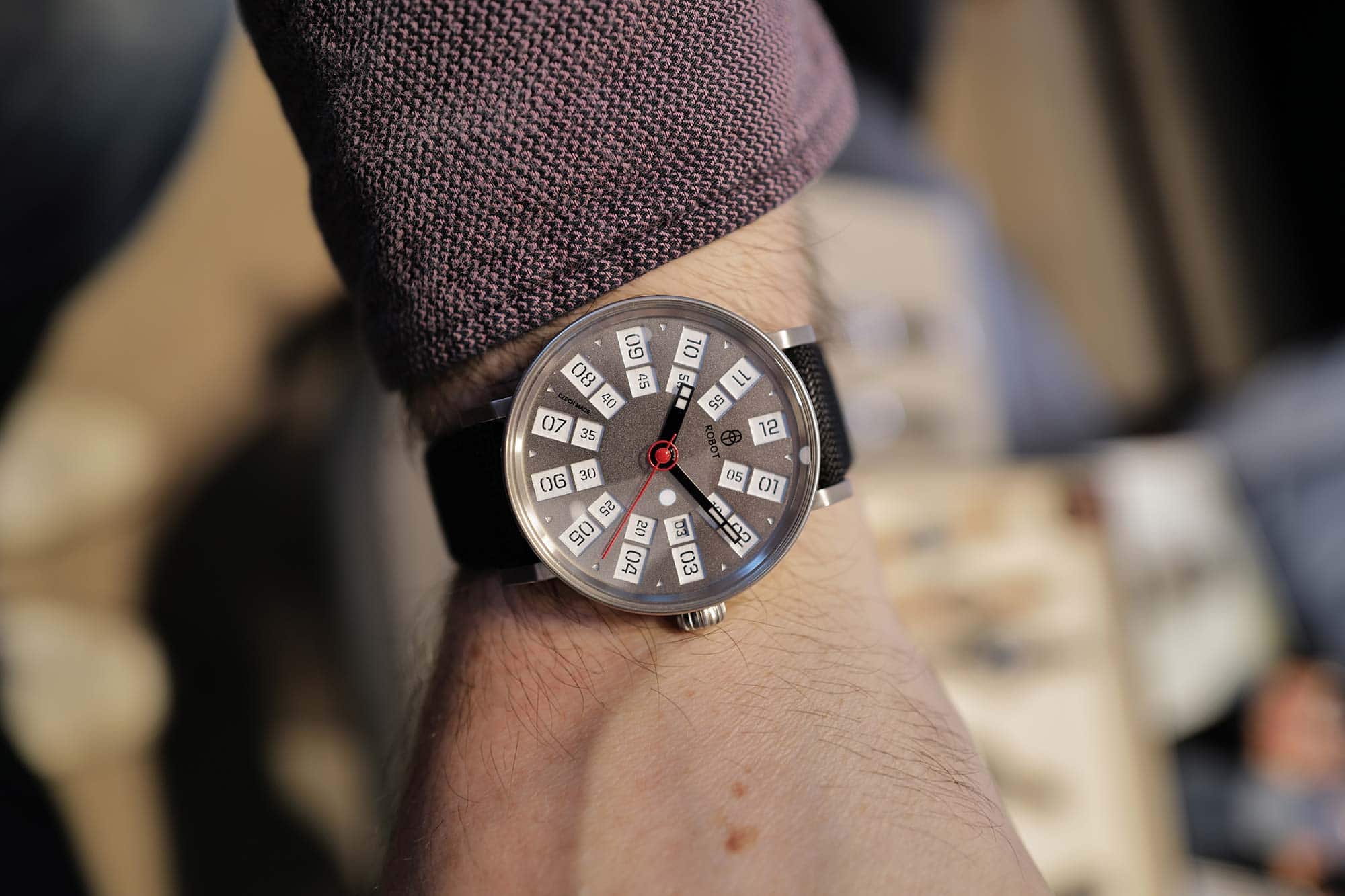
I’d never been to Prague, a city that for years has been on my list of international destinations I’d most like to check out. It entered this mostly mental list nearly twenty years ago, when I was in college, and Prague was often cited among my classmates as an affordable and desirable place for students to hang out on break. The city, to me, had a reputation for an active nightlife and cheap but fantastic beer. I was not disabused of either of these preconceptions during my short time in the city, even though the nightlife aspect has long since become rather irrelevant for me, personally. The beer, however, is not, and there were many pilsners consumed during my time there.
It turns out, decades removed from those university days, that there are much more valuable cultural reasons for visiting the Czech Republic than beer and all night dance clubs, although, for sure, there are still many, many English speaking tourists who find their way to the city for those reasons. The Czech Republic I saw was filled with history and charm, and it was exciting to have that experience filtered through the country’s horological history, which runs deep.
Arrival and Villa Čapek
The only time I’m truly jealous of my New York City based watch media colleagues is at the start of a long international trip. Direct flights to the cities I actually need to be in from Boston are not exactly plentiful, and the experience of getting to Logan Airport from Concord, NH is absolutely maddening. Flying to Prague via Munich on a Sunday evening meant boarding a bus a few blocks away from my home at 2:30 in the afternoon for a flight scheduled to depart a little after 8:00 PM. You’d think that would be plenty of time if not far too much time at the airport but because of the absolute mess that is Boston traffic when the Sumner tunnel is closed (not even the tunnel that takes one to the airport, mind you, but the one that you’d normally take leaving it) it turned out be just about right. A tunnel closure in either direction means the entire airport grounds becomes a big parking lot, and I was probably on that bus between A terminal and E terminal for about the same length of time it took me to get to Boston proper from Concord.
Once I cleared security and found my way to my gate after spending far too much money on airport bottled water and a bag of turkey jerky, I pulled out my laptop to familiarize myself once again with my Czech Republic itinerary. I’d arrive in Prague around noon local time the next day, and our first stop would be Villa Čapek, a property owned by Robot’s founder where we’d stay for a night before taking in the brand’s manufacture in Nové Město nad Metují the next day. After that, we’d find our way to Prague, with the following day’s activities centered in the city itself, with a focus on absorbing the brand’s collection at the Robot boutique, and Prague history via a tour of their historic astronomical clock, and a bunch of other sites. Like most press trips, it looked like a lot crammed into a short time, which made me particularly grateful for that first night at Villa Čapek, which set a perfect tone for the remainder of the experience.
I stay in a lot of hotels geared toward business travel. In other words, rooms with the bare minimum of creature comforts, with luxuries sucked out of the experience in the name of cost saving and the ease of a quick turnover. So Villa Čapek, which is very much a spa-like environment, was a real treat. And after a brutally long travel day, it was incredibly pleasant to unwind in a relaxed environment. The Villa is about an hour’s drive outside Prague, and as we got further away from the city I began to appreciate the quiet and isolation. This part of the Czech Republic reminded me, in a lot of ways, of Vermont. I saw lots of rolling green hills, little towns, and a landscape dotted with farms. After walking the grounds and exploring a bit of the Villa we enjoyed a meal and I quickly found myself passed out peacefully in my room, enjoying the type of sleep you only get when your tank is on empty and you exist in that liminal space where time zones don’t even apply.
The Manufacture
Refreshed after a great night’s sleep, our group piled into the Robot van (a vehicle we’d all become very familiar with over the next few days) and headed out to the brand’s manufacture. The city of Nové Město nad Metují is a two hour drive from the Villa, mostly through back roads, that begin to give you a real sense of the Czech landscape. The countryside is beautiful and as we passed through towns and small villages the history of the country became inescapable. There’s a mix of architecture that feels almost ancient and, at times, unmistakably Soviet, a reminder that what’s now known as the Czech Republic sat behind the Iron Curtain for decades. Wherever we went, multiple eras of history seemed to almost compete with one another: the centuries old Bohemian traditions, the communist period, and the modern, open, and incredibly welcoming society that is burgeoning in the Czech Republic today.
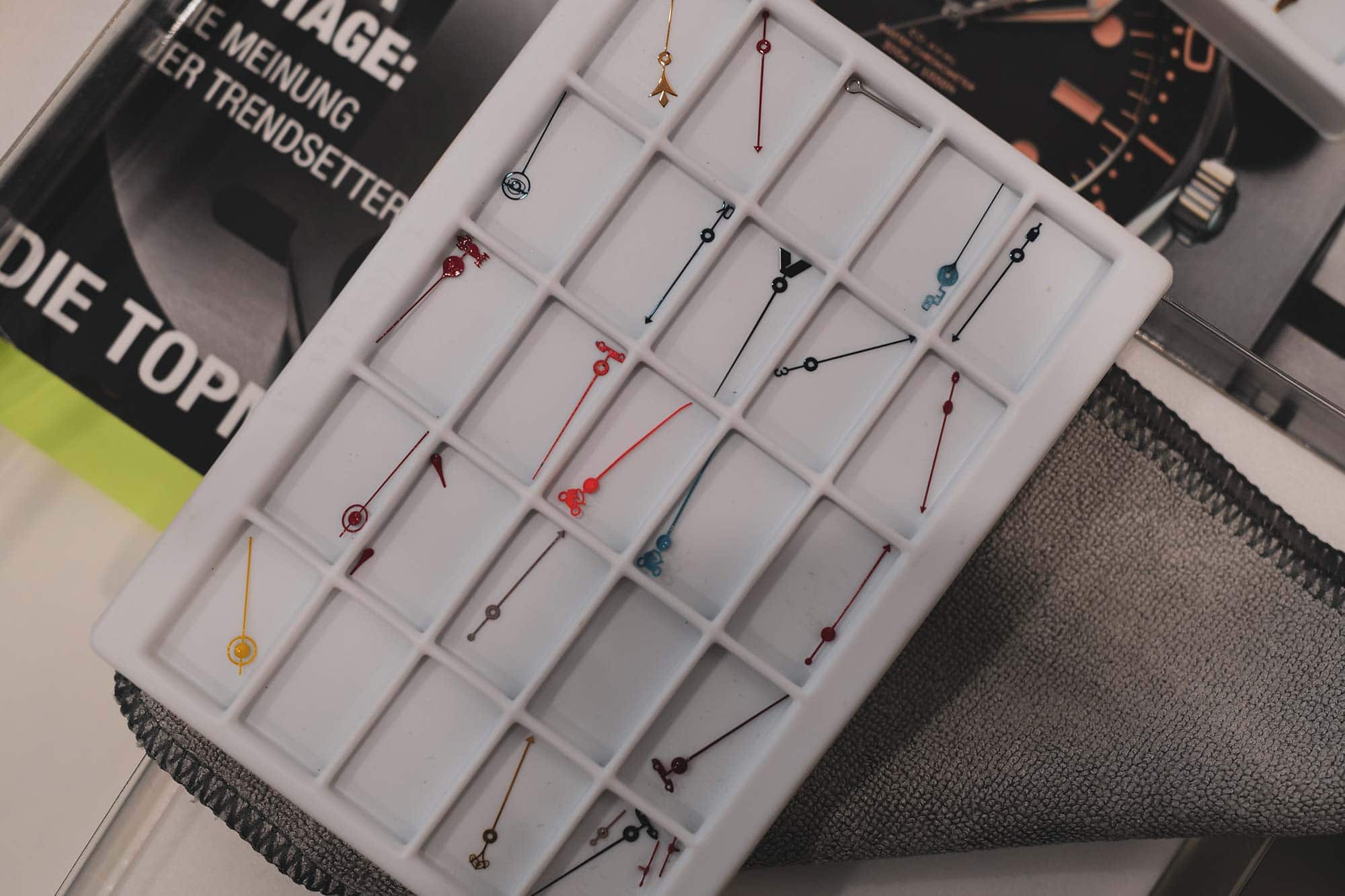
The Robot manufacture is located in a nondescript building near the center of town, and is quite small. That’s to be expected – Robot’s annual production is numbered in the hundreds of watches. They have a small team of designers, watchmakers, and experts in finishing that work on completing watches in their facilities day in and day out. I was surprised and impressed with just how much is done in Robot’s Nové Město nad Metují space. Of course, all of the design work is done here, and because so much of Robot’s output is custom work for individual clients, this is truly ongoing day to day. Many aspects of a Robot watch can be customized, but a popular option that we focused on during our tour was the counterweight on the running seconds hand. Just about anything a customer can dream up can be machined at the end of a seconds hand: a favorite car, a guitar, or initials, for example. We saw a bunch of examples of actual custom designs – Robot of course keeps spares on hand for when watches come back for service.
Case components and movements are made in Switzerland but finished by hand in the manufacture, and the finishing on Robot watches is uniformly excellent, with different references receiving a variety of treatments, including high polish, brushing, burnishing, and microblasting. Cases and dials can also be electroplated with various coatings in their manufacture, and some dial components are meticulously hand painted. The hands, notably, are machined, not pressed or stamped, which allows them to be finished in a more complex way. This is an area where a lot of brands at Robot’s price point (which ranges from around $3,000 to $8,000) take shortcuts, so it was impressive to learn that they do such a small thing that only the most hardcore watch nerds will notice in an old-fashioned, traditional way.
The manufacture feels much like other watchmaking operations I’ve visited over the years, but just on a smaller and more intimate scale. All the hallmarks, though, are there, including prototype cases and dials in various stages of completion on just about every flat surface. Because of the small space, I got the sense that no single department or individual is too isolated – there was always lots of movement between design, assembly, and finishing, and one gets the sense that it’s a fully collaborative environment.
After our manufacture visit we spent some time walking around Nové Město nad Metují. In hindsight, this might have been one of my favorite little moments from the trip. It was referred to at various times as a city, but the population is just shy of 10,000 people, which, at least in New Hampshire, would make it a town, and a fairly small one at that. Glashütte, the watchaking center of Germany, is even smaller, with a population numbering fewer than 7,000. But there’s a surprising amount of industry here, and indeed it’s considered the home of Czech watchmaking, and has been the home to the well known Czech brand PRIM for many years.
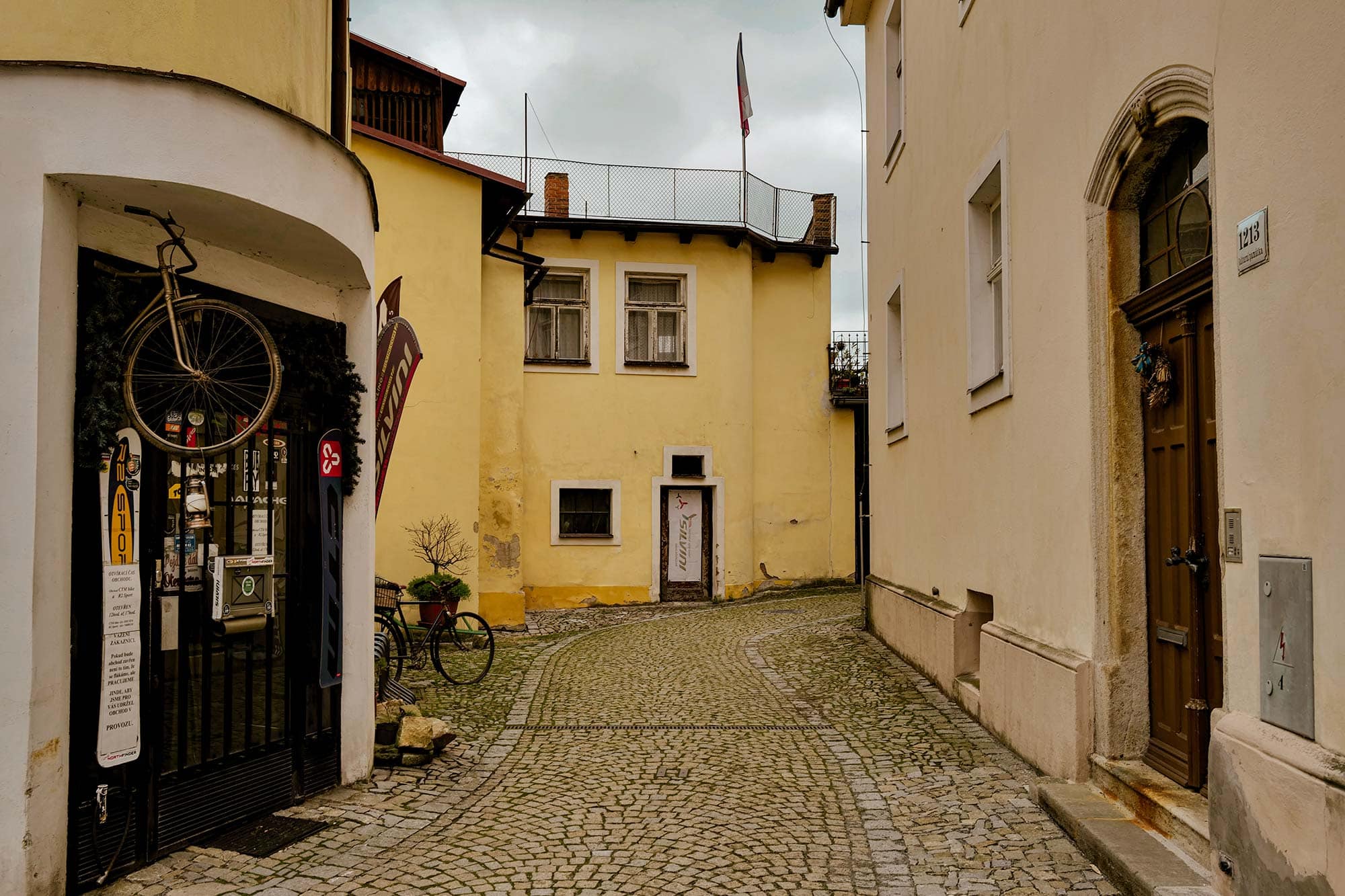
Nové Město nad Metují is a remarkably photogenic place, with a castle dating to the early 1500s at the center of town being the most notable landmark. There’s a small business district with restaurants and shops, accessed through winding but easily walkable streets that take you past more historic architecture.
From Nové Město nad Metují it’s another long drive to Prague, where we’d stay for the rest of our trip. While being “on the road” while already on the road isn’t normally something I look forward to, watching the scenery roll by in the late afternoon hours as we made our way back into the city was relaxing and tranquil. I’m glad that we got to experience this part of the country rather than being resigned to the city center for the entirely of the trip. Not only does seeing the countryside give you a fuller view of life in the Czech Republic, it illustrates a counterpoint to one of the most visited and tourist friendly cities in Europe. It’s impossible (and pointless) for me to speculate how many people who come to the Czech Republic to visit Prague see anything beyond the city limits, but my hunch is that it’s a relatively small number, and I’m glad traveling through these small towns was part of our experience.
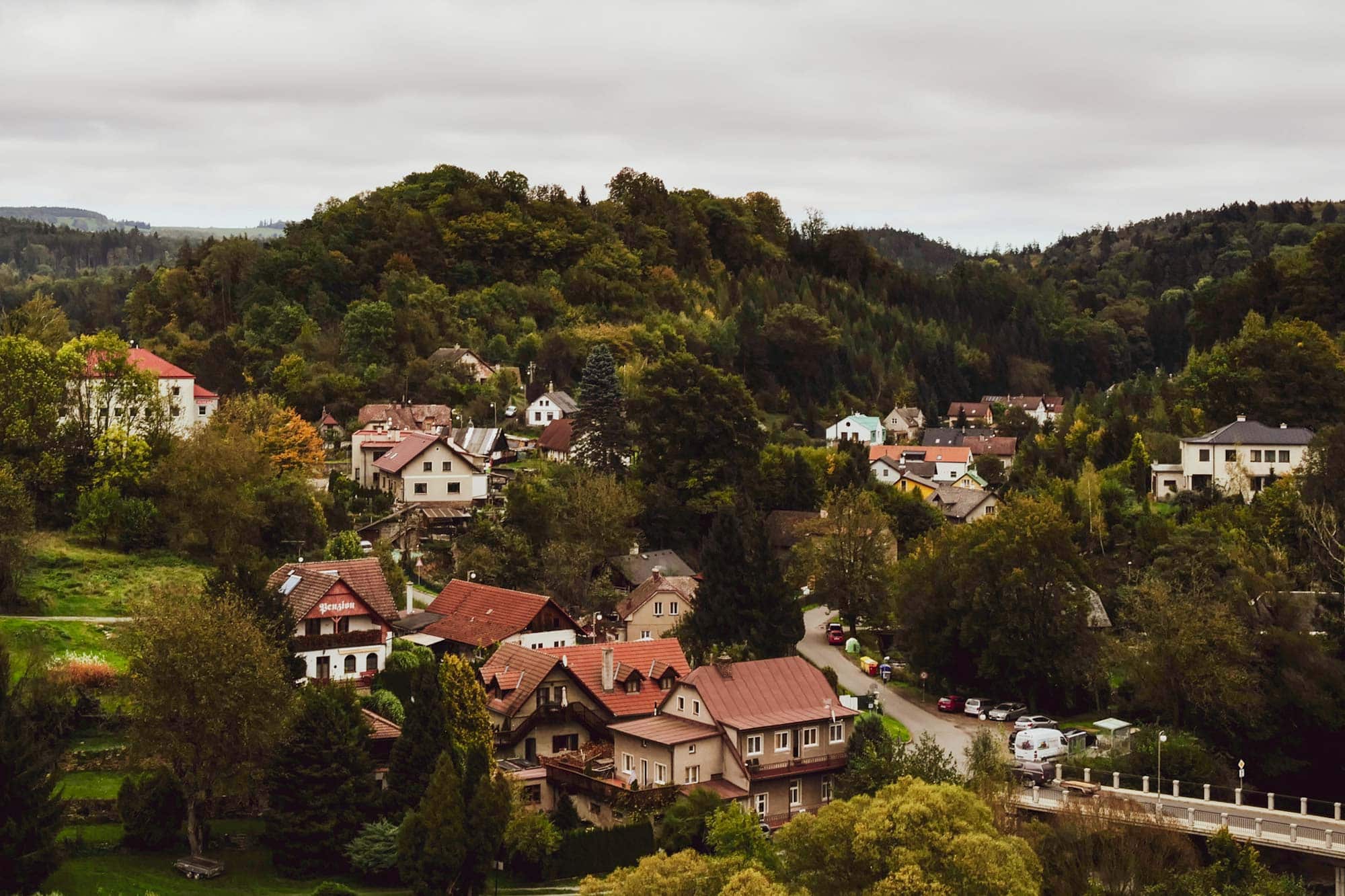
Prague
By the time we checked into our hotel to get ready for our evening activities (dinner in Prague and some light sightseeing) I had an opportunity to catch up on some emails, text messages, and work that had missed me since I had left. Among the text messages I received from back home, I saw one from Nathan Schultz, my friend and Worn & Wound contributor, who had noticed from my social media output that I was in the Czech Republic. Nathan explained that he had spent significant time in Prague, working and studying, and that it was, in fact, his favorite city. I told him a bit about why I was there and what we’d already done and had planned, and in the course of our conversation some culinary recommendations naturally came up. Fried cheese sandwiches, he said, were one of his favorite things to eat in the city, describing them as delicious, cheap, and ubiquitous. Those are basically my three favorite qualities in any dish, so I told myself (and Nathan) that I’d be on the lookout.
People always ask about the food when you travel, and I’ll say at the outset that I did not have a bad meal over the course of my time in the Czech Republic. Most of our meals as a group could be categorized as traditionally Czech in nature, which meant for the most part that these meals were heavy, the kind of calorie rich plates that make you – or force you – to take a nap immediately after.
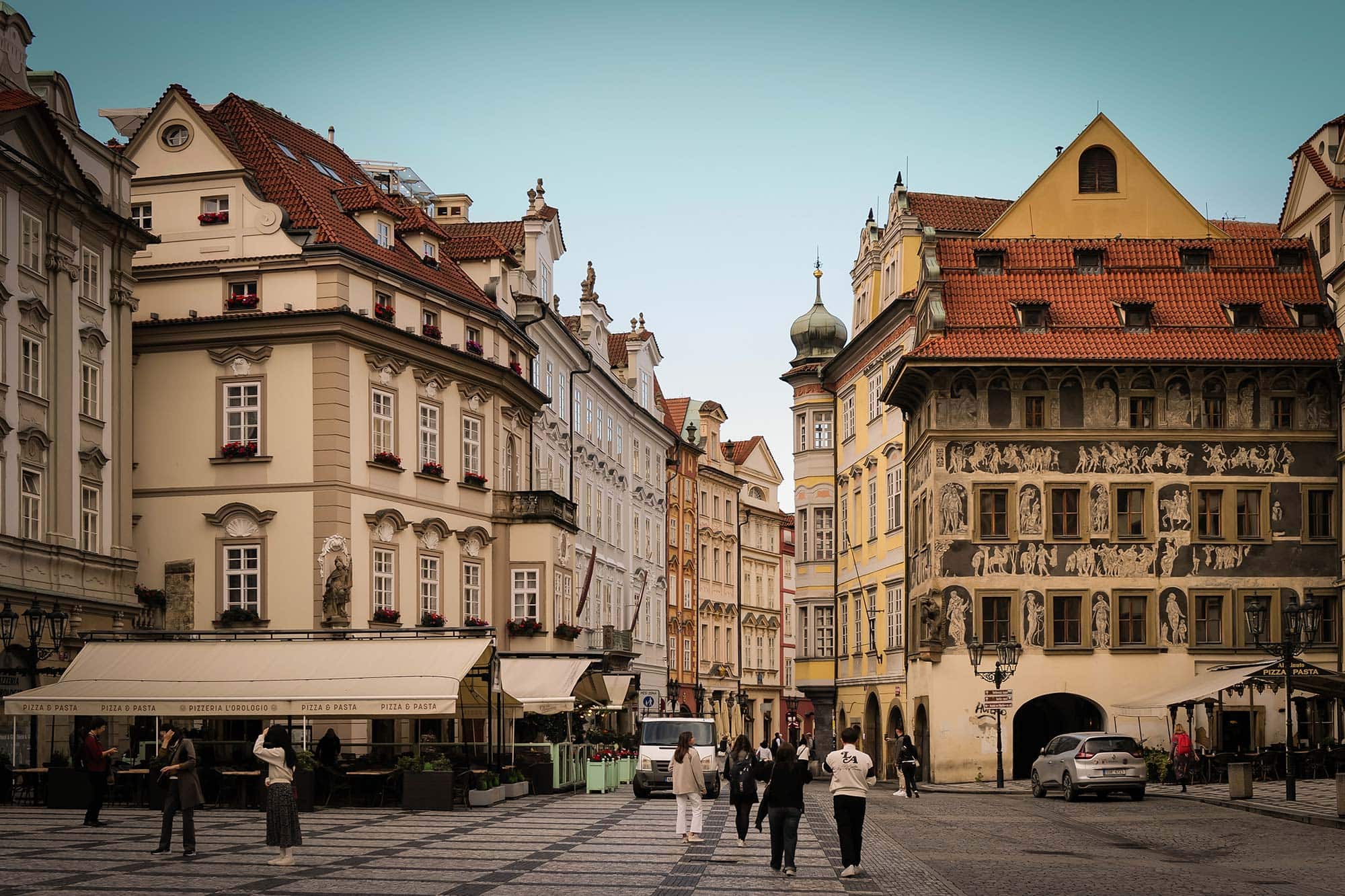
On that first night in Prague, we found ourselves at Lokál, a bustling (and huge) Czech pub and restaurant with a traditional menu filled with Czech staples. It’s the type of place where part of the fun is the people watching, and seeing the amazed looks on patron’s faces when their giant plate of schnitzel arrives tableside. Of course, lots of food was ordered to share: pork crackling spread, traditional Prague ham, all kinds of sausages with an incredibly tasty horseradish sauce, and more. Taking in the huge menu, I noticed a fried cheese dish, served with buttered potatoes (common in many Czech dishes) and tartar sauce. Based on Nathan’s recommendation, I of course had to try it.
This was easily the best thing I ate on the trip. It was presented simply: a square, lightly fried block of Edam, with the aforementioned potatoes served in a rich, buttery sauce and a large side of tartar sauce. Yes, tartar sauce. That combination, though strange, was a winner, for reasons I can’t quite wrap my head around, but the richness of the cheese and the tanginess of the tartar worked well together. But the cheese – my goodness. Looking at it, it would be easy to dismiss as a Czech version of a giant mozzarella stick. But it was quite a bit more complex, and filling enough that it presented a real challenge to finish. I’m happy to say I was up to the challenge, as were my colleagues who also ordered the fried cheese, which was a big hit all around. So, thanks to Nathan for the rec.
The Orlog and Old Town Hall
Our first and only full day in Prague proper started with the activity I was most looking forward to: a guided tour of the Orlog, the historic astronomical clock at the center of the city. Situated on the southern wall of Old Town Hall in Old Town Square, the Orlog is a major tourist attraction, even for visitors who I imagine are not watch obsessed. It’s quite simply the oldest and most impressive clock of its type to still survive to this day. Its functionality is complex, displaying the positions of the sun and moon, as well as the time on what’s known as the “Old Czech” time scale, where “24” equals the time of sunset, which of course will vary throughout the year.
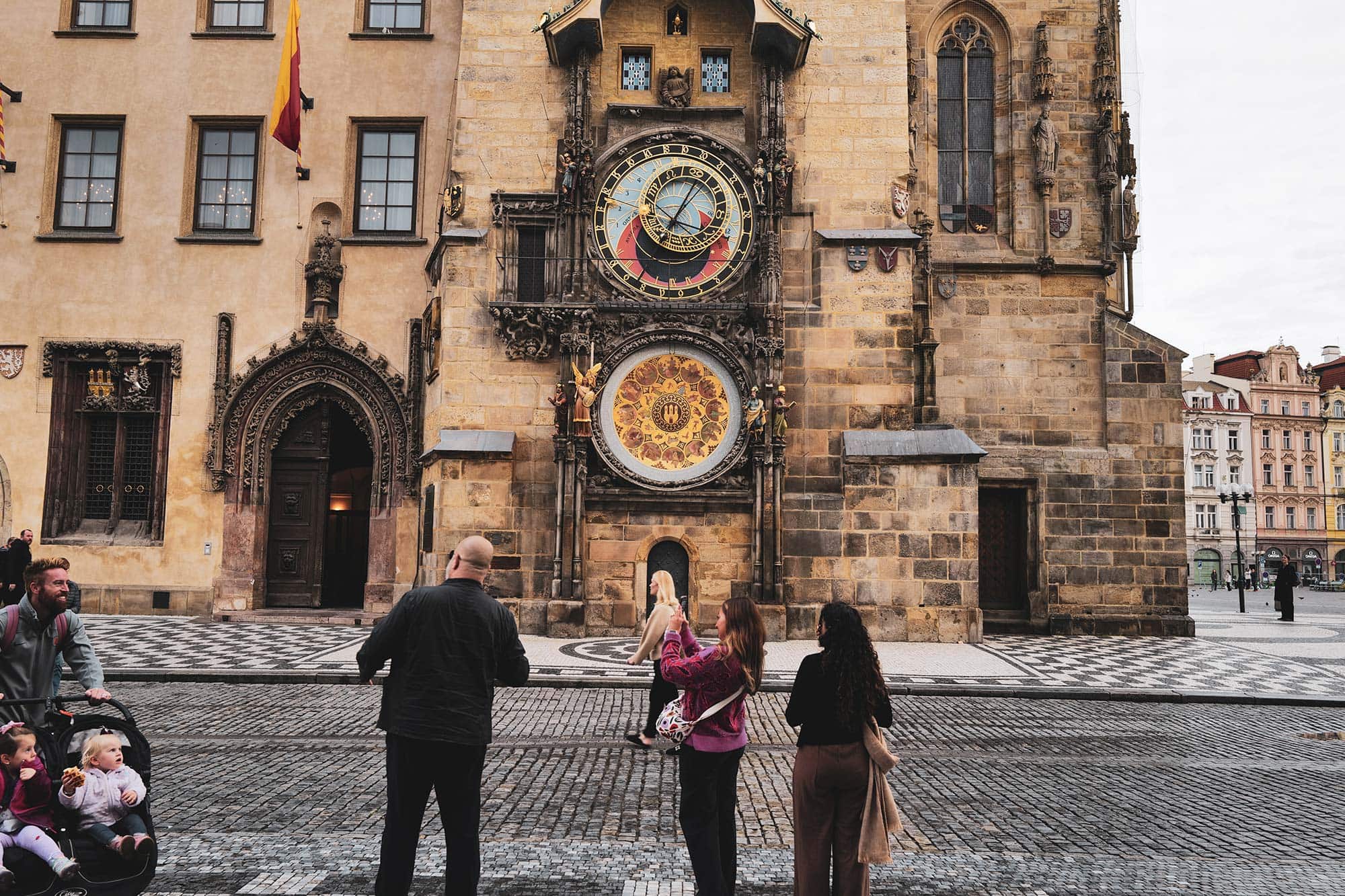
The reason the clock is such a tourist draw, however, is the show that it puts on each hour. The “Walk of the Apostles” each hour sees the windows perched above the clock open, with figures representing each apostle passing through. They are flanked on each side by more figures in motion on the outside of the tower, including a skeleton as a representation of death. It’s quite a sight, and when the top of the hour hits, the area directly in front of the clock fills with people ready to take photos and video as the moment approaches. With the possible exception of Big Ben, I have to think that the Orlog is among the most visited horological attractions in the world, and as a member of the larger community it was a real treat to see so many people getting excited about a clock.
In these photos you’ll notice a small door at the base of the clock tower. Our guide to the Orlog opened this door with a long metal key I can only describe as medieval in nature, and invited us up the tower for a look at the clock from the inside. This experience was incredibly cool but also kind of nerve wracking. The narrow spiral stairway up the tower is almost 600 years old, with uneven and slippery stone steps that require all of your concentration to navigate without incident.
The small room at the top where the clock is operated from has been renovated over the years (as has the clock itself), and it was explained to us that while much of the mechanical nature of the clock is intact, the actual timekeeping is done electronically. Ropes that appear to be guiding movement components are actually embedded with cable that brings power to the clock. It’s no less impressive, though. The clock has been standing since the early 1400s, and has survived not just time, but also the Nazis, and a communist regime. The fact that it’s now in a state where it can be enjoyed, admired, and studied for generations to come is quite an achievement.
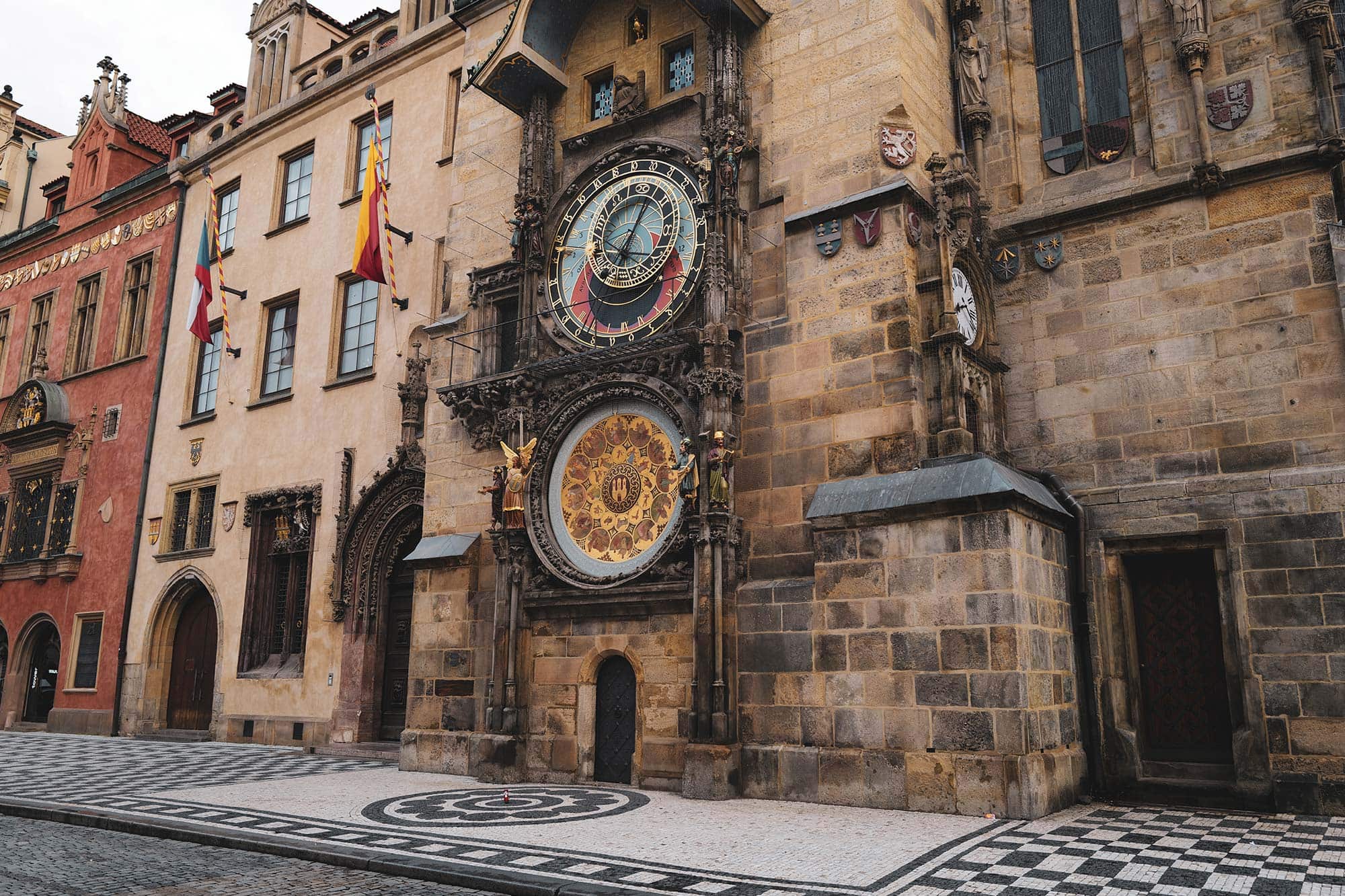
Many of us were covered in clocktower dust after descending those same spiral stairs, an experience that was not less intense in reverse. We found Old Town Square to now be absolutely swamped with tourists, getting ready to see the clock do its thing at the top of the hour. As the clock struck and we witnessed the apostles pass through those windows, the entire facade came to life with motion and sound. I have to admit, though, that I was just as interested in the experience these tourists were having. I found it surprisingly moving when it dawned on me that so many have come to this historic site this morning to see a clock, of all things. There are a lot of things to see and do in Prague, but these people, and hundreds more every hour, everyday, chose horology.
We continued to play tourists after our Orlog experience and took a guided tour of the Old Town Hall itself. There were two highlights here, at either end of the building itself. Old Town Hall, and this part of Prague more generally, has a complex network of underground basements and tunnels. At one point during our tour, we were led into the building’s centuries old basement, and guided through a network of tunnels that eventually put us underneath a completely different building on the opposite side of the street. These spaces were living quarters for many, and these interconnected underground homes were neighborhoods unto themselves. In more recent times, the tunnels proved to be important to the defense of the city during World War II – we were reminded again and again of how close the Nazis came to overtaking Prague.
From the lowest points in Old Town Hall, we made our way to the highest. The tower at Old Town Hall is a major attraction unto itself, providing incredible panoramic views of the entire city, including Prague Castle in the distance. I took many, many photos while at the top of the tower, and enjoyed the cooler temperatures and a nice breeze, which nearly made me forget that I was in yet another small space with what felt like far too many people. It was worth it, though. Every view from the tower felt worthy of a postcard.
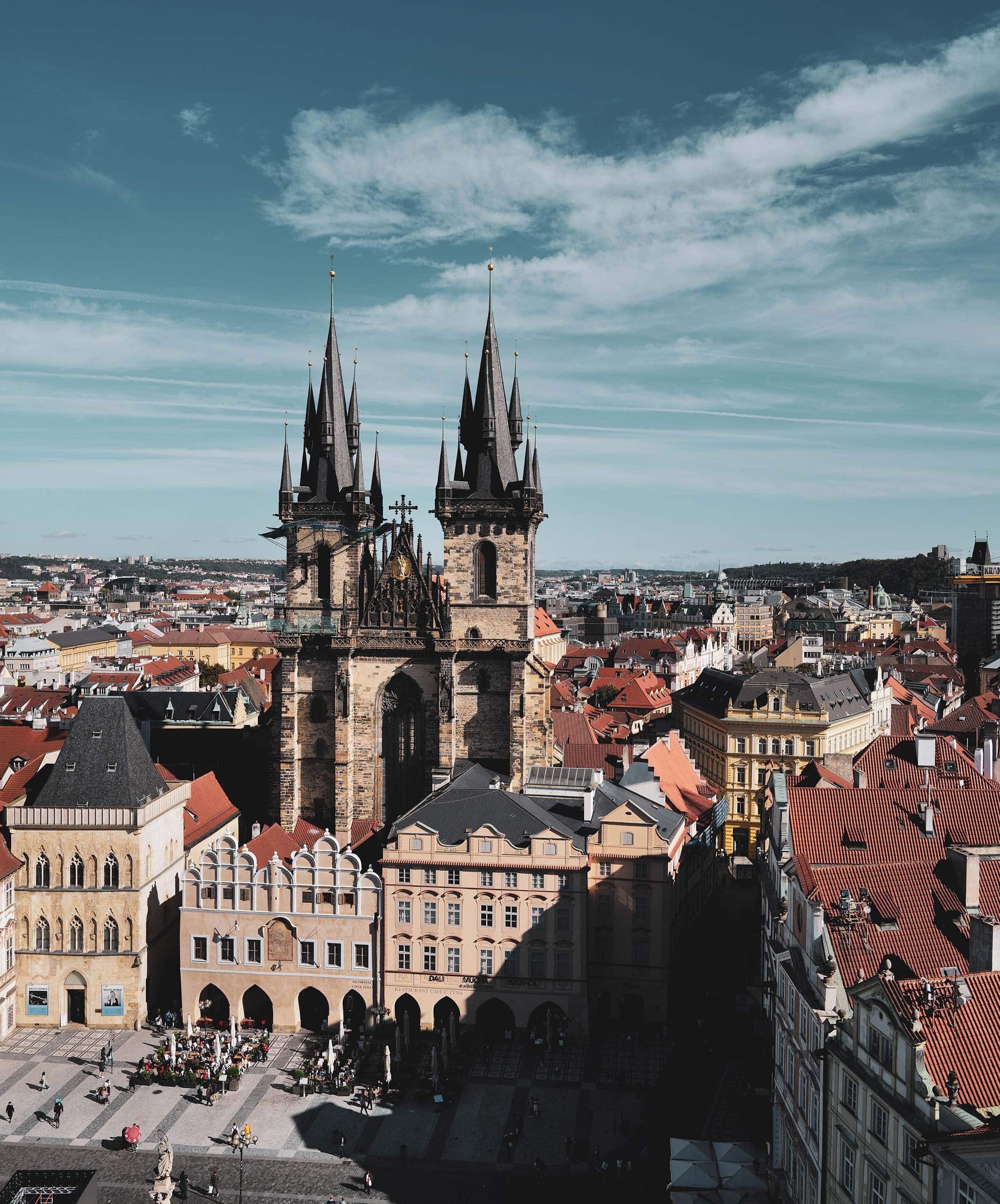
The Robot Boutique
Robot’s boutique is just a short walk from Old Town Hall, and after a few hours of sightseeing we landed there to finally get some real hands-on time with the entire Robot collection. Up until then I had been wearing the beige dialed version of the Aerodynamic, a watch inspired by the Czechoslovak Tatra 77, considered the first mass produced aerodynamic car in the world. The embossed ridges on the dial are a design element taken directly from the Tatra’s body, and add some nice visual interest and depth to the metallic dial. The Aerodynamic is one of Robot’s most popular references, and while it has some visual cues that are lifted straight out of vehicle design (the fuel guauge/power reserve indicator) it doesn’t necessarily scream “car” to me, which is a good thing. It’s also the reference with the single best dial in Robot’s catalog, a green variant with a treatment that causes the dial to appear to change color fairly dramatically depending on the viewing angle and light. Like the Grand Seiko SBGC275, the effect is not just seeing another shade of the dial’s base color, but a completely altered perception of the dial color.
The Aerodynamic’s real strength however, and this shouldn’t be a surprise given the name, is the watch’s wearability. The case is 39.5mm in diameter and about 12.5mm tall, and it’s made out of titanium, so it feels incredibly light on the wrist. The short lugs and curved profile make it easy to wear. The watch’s aesthetic is one of refined sportiness, which fits in nicely with the “gentleman driver” vibe that the brand is putting out into the world. This watch also features a manually wound La Joux-Perret caliber with an 8 day power reserve and a custom (and dramatic) skeletonized bridge.
The other watch in Robot’s collection that really stood out to me was the Graphic Analog, a complex sandwich dial design in a 42mm steel case. The dial has two rectangular apertures at each hour, with the interior aperture serving as a minute scale in increments of five, and the exterior aperture clocking the hours. The design is inspired by the work of Jiří Rathouský, a Czech graphic designer whose work is most often associated with clocks used throughout the country’s public transportation system, including the Prague Metro system. As someone who travels quite a bit, I think about the public clocks I encounter on the road frequently, and if I’m being honest, most modern public clocks would not translate particularly well to a wrist watch design (many are simply digital screens). Even without being familiar with the Prague Metro, the dial on the Graphic Analog immediately conjures the type of flip clocks that used to be ubiquitous in airports and train stations, and I really liked the way Robot has incorporated these ideas into a dial design.
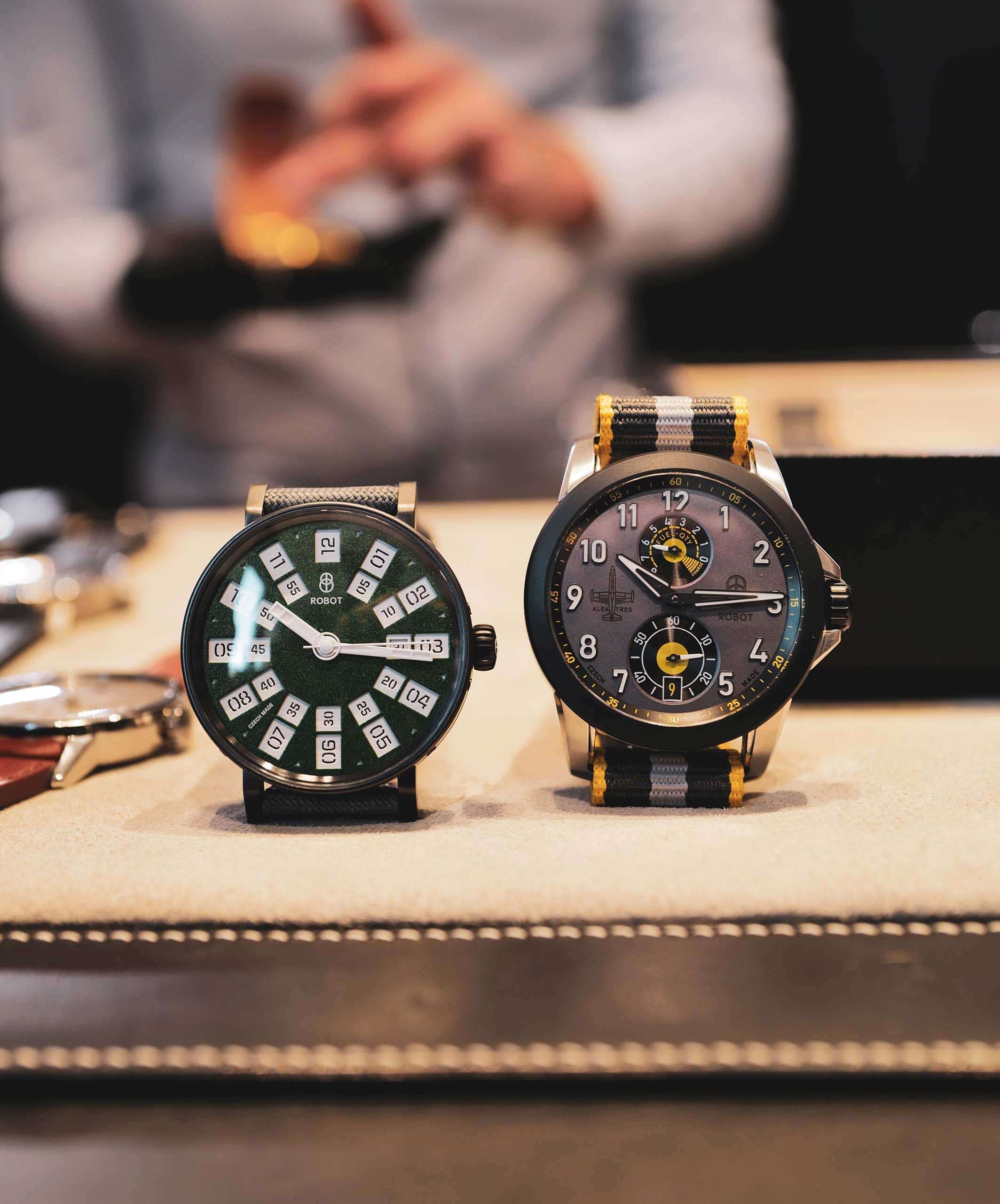
Robot’s collection is quite varied, and it’s hard to find a definitive house style among the several collections we had a chance to look at. Rather than a particular design goal, what ties these watches together is a desire to communicate something about Czech culture to the watch community. The message seems to be that the culture of the Czech Republic is as diverse as Robot’s design language.
The other thread that links Robot’s watches together is a commitment to getting the (literal) small details just right. Most of their watches feature some type of design flourish that is tough to spot immediately with the naked eye. You have to be a certain level of watch nerd to look closely enough to see them in the first place, and then once you do, they become that much more rewarding. The best example of this idea is probably the Minor, a racing inspired chronograph that has a dial with 3,462 tiny pinholes that give you a view of the movement underneath. The holes are so small, though, and so tightly packed together, that the dial appears solid at certain angles, with the partially translucent effect only coming into play in certain lighting conditions and viewing positions. Once you see it, however, it’s hard not to be impressed with the precision of the dial work and the visual effect it creates.
Coming Home
After a final meal together later that evening in the heart of Prague, we parted ways with our hosts and most of us returned to the hotel to sleep as long as we could before another very long travel day. It’s always easier, though, flying west. The time change works in your favor, and I enjoy stepping out of the airport in Boston and seeing daylight when my body expects the dark of night – it always gives me a little bit of a second wind.
This particular trip was also energizing in its own right, because I came away from it more convinced than ever that small independent brands like Robot are stepping into a new and exciting era in watch collecting where they’ll find collectors hungry for something different and genuinely unique. I’ve made it a point this year in my own watch purchasing decisions to support small independent brands that I really believe in whenever I can, and that bleeds over at least a little bit into what we decide to cover on Worn & Wound. My hope is that we’re shining a light on brands and watches that might otherwise fly under the radar and can use some amplification. Robot, I think, falls nicely into that category, and is part of a cohort of independent brands making watches at accessible price points that offer real ingenuity, or craft, or a bit of both.
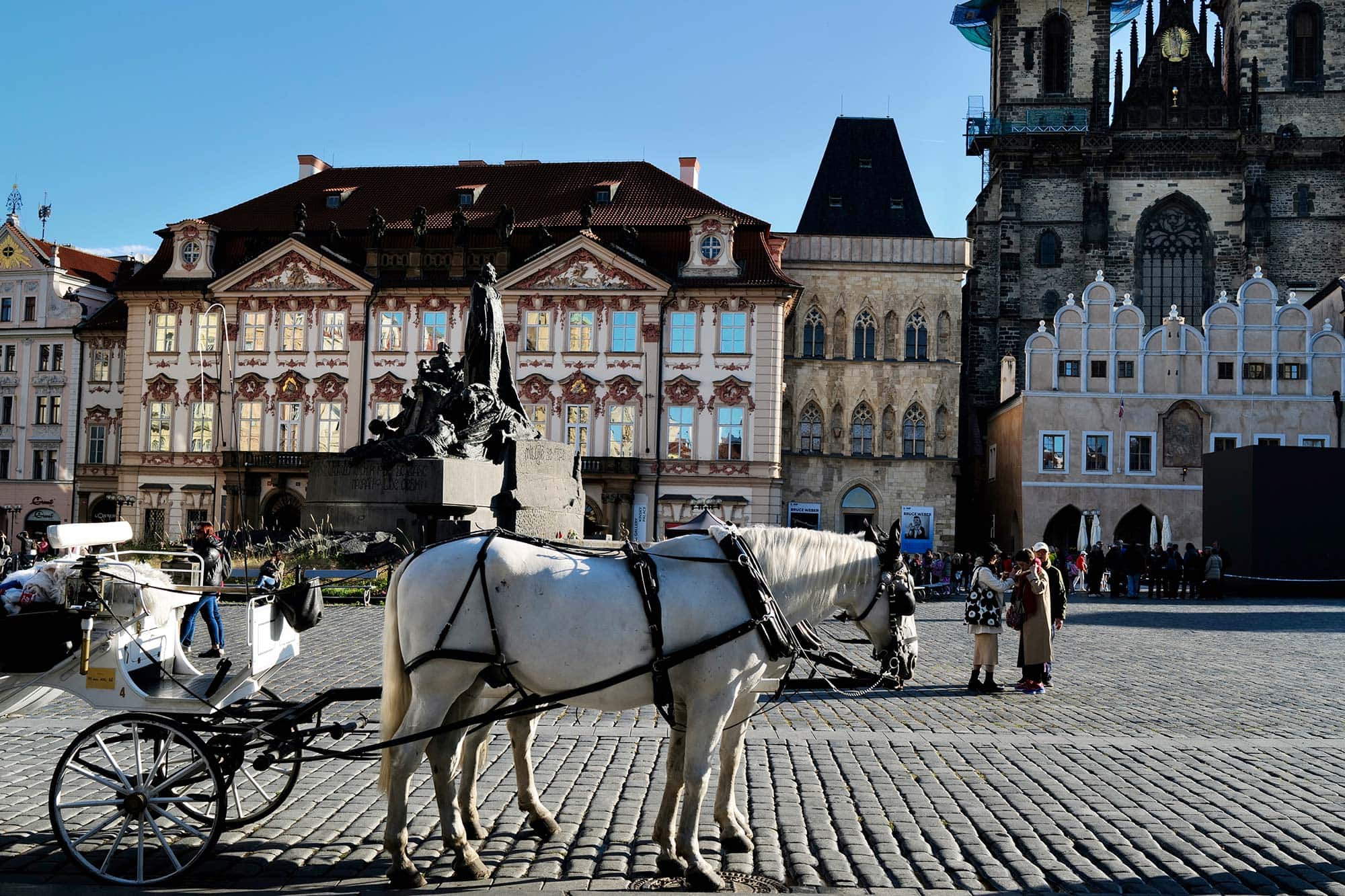
My experience in Prague also underscores another point that we talk about a lot here: watch enthusiasm and watch history is everywhere. Prague is not only the home to Robot, but has an active RedBar chapter (RedBar founder Adam Craniotes joined us on this trip, and hosted a chapter meetup the evening most of us left the city), and, through the Orlog, a real claim to horological history. We tend to focus on watch history being pinned in some way to a small handful of big historical pillars: Switzerland, Great Britain, Germany, and certainly Japan. But there are watch lovers and watch stories all over the world, and often in places you wouldn’t expect. And while I’m not claiming that Prague or the Czech Republic is deserving of headliner status in the centuries old story of watch and clock making, their role is distinct and special, and I’m glad Robot is around to help surface it. Robot









 Featured Videos
Featured Videos





